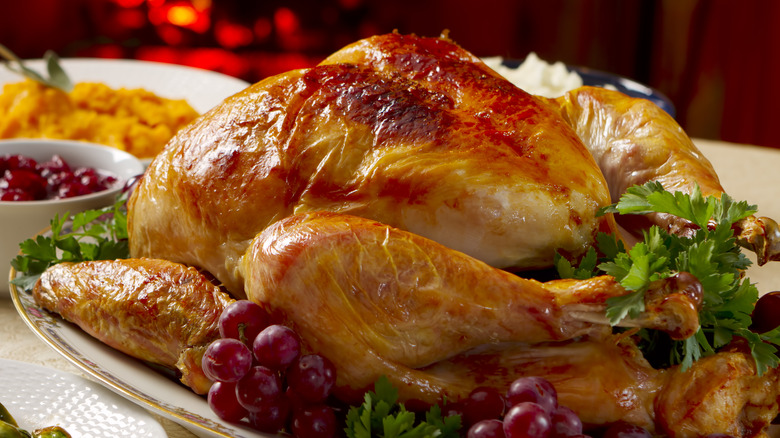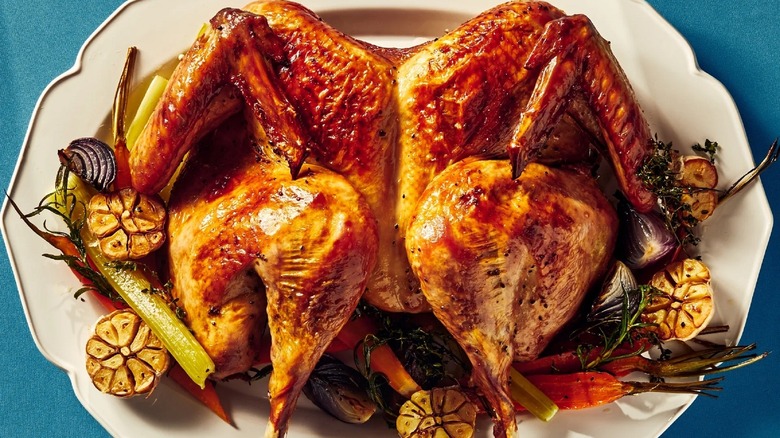The Most Important Consideration When Roasting A Larger Turkey
Some years, Thanksgiving is an intimate affair, but other years, everyone and their auntie shows up. Luckily, if there's ever a time to embody the idiom "the more the merrier," it's the holidays. If your celebration is set to include a large group, you may have equally large questions, like how many pounds of turkey breast should you serve per person? (Hint: Most people say between 1 and 1.5 pounds is sufficient.) Or better yet, how should you go about cooking a bird big enough to feed your whole party? To learn the answer, we called in recipe developer and lifestyle expert Peter Som, who explained to Mashed why you can't approach a large turkey the same way you would a smaller bird.
"For a large bird, you definitely need to make some adjustments so that you don't end up with dry meat," said Som. The first line of defense, according to him, is a tent of tinfoil to trap in moisture and keep all those juices from escaping, but only after the bird's skin has sufficiently browned. "Also," he explained, "here's a case where butter is your friend — in addition to tenting the bird, make sure you rub the bird with enough butter (under the skin and also on the skin) to help keep the meat moist." You can use all the glorious butter and drippings in the roasting pan to baste your turkey during the cooking process, Gordon Ramsay style.
Whip out those knife skills
Your holiday traditions may include putting the turkey in the oven, setting the timer, then starting the mad dash to finish all your favorite side dishes by the time the bird is done. (By the way, if you need inspo, we complied a list of the 60 best side dishes for Thanksgiving.) Don't make yourself so busy, however, that you forget to rotate your turkey halfway through, as Peter Som emphasized that this helps ensure even cooking. You will make that time up, though, because bigger turkeys need more time both in and out of the oven. "Allow extra resting time after the bird comes out — at least 30 minutes (but even more is better) so that the juices can fully redistribute," Som told us.
Alternatively, if you're handy with a knife and you feel adventurous, Som said you might consider spatchcocking the bird prior to cooking. A method often used to cook whole birds, Som explained that this involves "taking out the backbone, which basically flattens out the bird (and all the skin is facing upwards so you'll have crispy skin all over — an added bonus!), which will not only cut down on cooking time, but promote much more even cooking."

